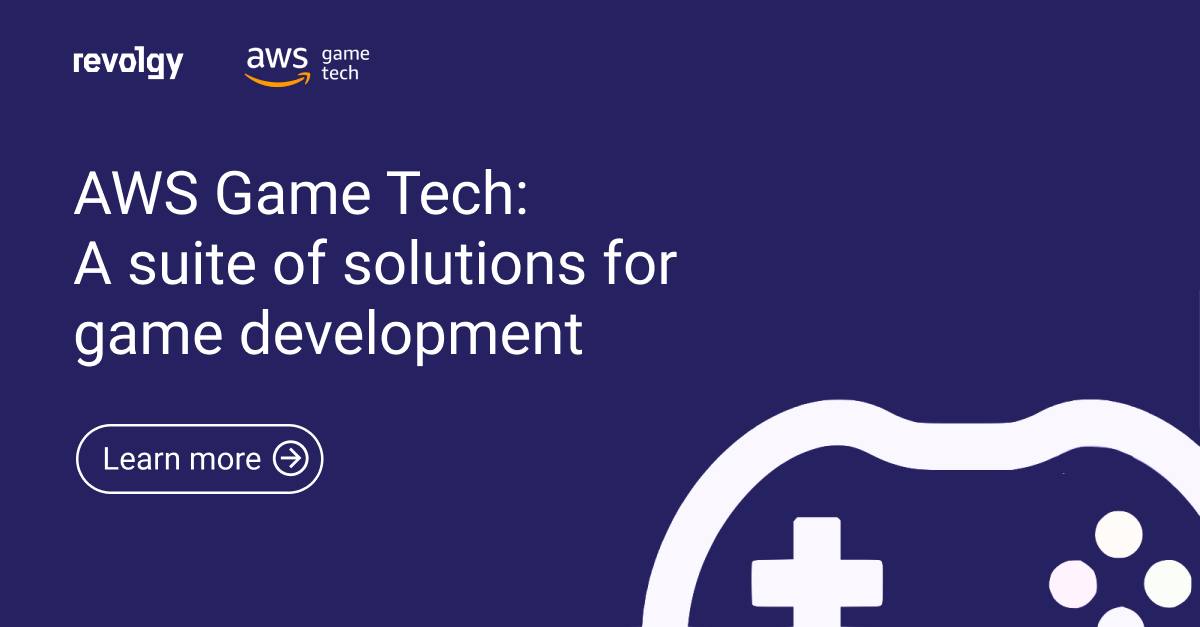AWS, Gaming
Behind the scenes of your favorite games
Gaming — and cloud gaming especially — is the Big Tech blooming industry of our age. With the growth of technology around us, it has been one of the most rapidly expanding businesses. The global market was expected to reach $196.8 billion in 2022 and is believed to increase further in the upcoming years.
|
|
|
There is no doubt that the industry is growing fast, and gaming studios play a significant role in that growth. These studios work to create, develop, and publish games that captivate players for hours around the world.
What happens in the background of these gaming studios? How do they operate, and what are the things they don’t want you to know?
In this article, we will explore what happens behind the scenes of a gaming studio and how cloud technologies support the steep growth. If you already have an idea for a game but do not know where to start, keep reading as we will high-level describe how to build a gaming studio in the cloud on your own.
Choosing the right engine
When it comes to making games, choosing the right game engine is crucial. You have a few options to choose from, but the most popular ones are Unity 3D, Unreal Engine, and custom game engines. Even though Unity 3D has the biggest market share (48% vs Unreal 13%), all engines have advantages.
Unity 3D is great if you want something easy to use and wish to have a wide spectrum of platform coverage. It's perfect for indie studios or smaller teams who want to create games quickly without sacrificing quality.
On the other hand, Unreal Engine is more advanced and better suited for big gaming studios that want to create AAA titles. It has some of the best graphics, physics, and rendering capabilities out there, making it an ideal choice for high-end games.
If you’re a big studio, you might even decide to create your custom game engine. This solution can give you complete control over the development process, but it’s not for the faint-hearted. Creating a custom game engine from scratch requires a lot of time, resources, and expertise.
Cost of engines
|
Engine |
Cost |
|
Unreal Engine |
A 5% royalty of the lifetime gross revenue from a product exceeding $1 million USD; in this case, the first $1 million remains royalty-exempt. |
|
Unity |
Does NOT take a percentage of the revenue |
|
Custom |
Huge amount of development and resources |
Version control / Collaboration
One important consideration when using either Unreal Engine or Unity for game development is that both tools generate or import large binary files, such as art assets, audio files, and compiled code. These files can quickly become very large, and versioning them can be challenging.
Git, which is the default version control system used by Unity, is not optimized for handling large binary files. Git’s approach to version control relies on storing a complete copy of every version of a file, which can be impractical for large binary files. As a result, developers may experience slow performance, large repository sizes, and version control conflicts when using Git to manage large binary files. These concerns were addressed in Unity and introduced Plastic SCM, which is better optimized.
Similarly, Perforce, which is the default version control system used by Unreal Engine, is optimized for handling large binary files. Perforce offers efficient versioning of large binary files, allowing developers to manage changes to assets and other large files without the performance and version control issues that Git can sometimes encounter.
Despite the differences in the default version control systems used by Unity and Unreal Engine, both tools offer support for integrating with external version control systems that are optimized for handling large binary files, such as Git LFS or Perforce Helix. These systems provide specialized tools for versioning large binary files, allowing developers to manage changes to their game’s assets more efficiently.
Game assets
When it comes to creating textures, characters, 3D models, or game worlds, you have several tools available for that, many for free but always with some paid professional alternative.
- 3D modeling and animation software: This software is used to create 3D models of characters, objects, and environments.
- Blender — open source — for free
- Maya — professional animation software for $2.5k/year
- Texture creation software: This software is used to create and edit textures that can be applied to 3D models. Substance Painter, Photoshop, and GIMP are some of the popular options.
- Cinematography software: Cinematography software is used to create cutscenes and camera sequences for games. Some popular cinematography software includes:
- Adobe Premiere Pro — offers video editing tools and features for creating cinematic sequences
Building the projects and testing
Game testing is a critical part of the game development process. It helps identify bugs, improve the gameplay experience, and ensure the game’s stability. However, game testing can be time-consuming and expensive, and there’s always a risk of game leaks during testing.
To prevent unauthorized information sharing about the game, developers should use non-disclosure agreements (NDAs). Cloud solutions like pixel streaming can provide an extra layer of security, allowing testers to play the game without downloading the build. Pixel streaming keeps the game code secure, preventing leaks, and adding watermarks to game footage can help identify any leaks and take appropriate action.
Distribution and hosting
One of the big decisions in developing your game is how you will host it, especially if we are talking about multiplayer games.
On-premises hosting:
- This type of hosting gives complete control over the player experience and provides an optimal experience for the game server.
- However, it requires a significant capital outlay and hardware maintenance, and may be difficult to scale up and down with player demand.
Cloud hosting:
- Game services on a cloud platform can include social features, friends lists, messaging, notifications, lobby, matchmaking, leaderboards, user-generated content, and speech for non-playable characters.
- Fraud detection solutions and ML/AI tools can be used to detect in-game fraud, prevent cheating, predict player behavior, automate speech recognition, and perform playtesting.
- User authentication and identity management can be handled through cloud-based authentication systems.
- Game analytics and big data can be used to gain insights, make better design decisions, and retain the player base.
- Monitoring tools like real-time game analytics and observability can improve gameplay experiences and keep systems running smoothly.
- Cloud platforms offer scalable and secure game servers that can meet the demands of hundreds of thousands of concurrent players across the globe.
- Cloud databases can be used for storing player profiles and game data that persist beyond a single game session.
- Remote graphical workstations can be deployed through the cloud platform, allowing for building a distributed development pipeline.
- Cloud platforms provide all the core functions from databases, content delivery, and networking to support your game as it grows.
Hybrid hosting:
- This type of hosting combines the benefits of on-premises and cloud hosting.
- It allows you to keep some parts of the game on-premises while benefiting from cloud hosting scalability and flexibility.
- However, it requires management in two various locations, which can take additional time and overhead.
CDN for games
Cloud providers also offer a service called Content Delivery Network, which consists of edge servers distributed around the world that help deliver game content and assets faster and more reliably. It can reduce load times, improve the player experience, and make games more enjoyable for everyone who plays them.
Data analytics
Well-thought-through usage of the data can be a game changer for your game. Knowing the answers to the following questions can bring your game to the next level: How many people play your game? When do they give up? Do they come back? Can we track the cheaters? Are there any patterns?
The level where you can focus on building your game and the well-structured, deeply analyzed data is working to your advantage.
To start your journey with data analytics, you need tools that will serve you with structuring, centralizing, and analyzing data.
The key is to capture and process game events and measures in a data warehouse. That makes it a first choice you must make; to choose a data warehouse fitted to your needs. Redshift would be the most common solution for Amazon, and the equivalent for GCP would be equally popular BigQuery.
Allowing key business metrics, issues, and alerts to be surfaced through dashboards, storyboards, and charts with AWS QuickSight or Google Data Studio. The integration will encompass internal data generation through; for instance, Kinesis, Aurora augmented with external sources such as Google Analytics and Alchemy.
Additionally, AWS GameLift offers extensive monitoring capabilities that allow game developers to track and analyze game server performance in real time. With GameLift, you can monitor server health, track player activity, and behavior, and identify issues and trends that affect gameplay. This monitoring data can be used to optimize game performance, improve the player experience, and increase player retention.
Do you want to know more about cloud gaming? Reach out to us for a free consultation.



